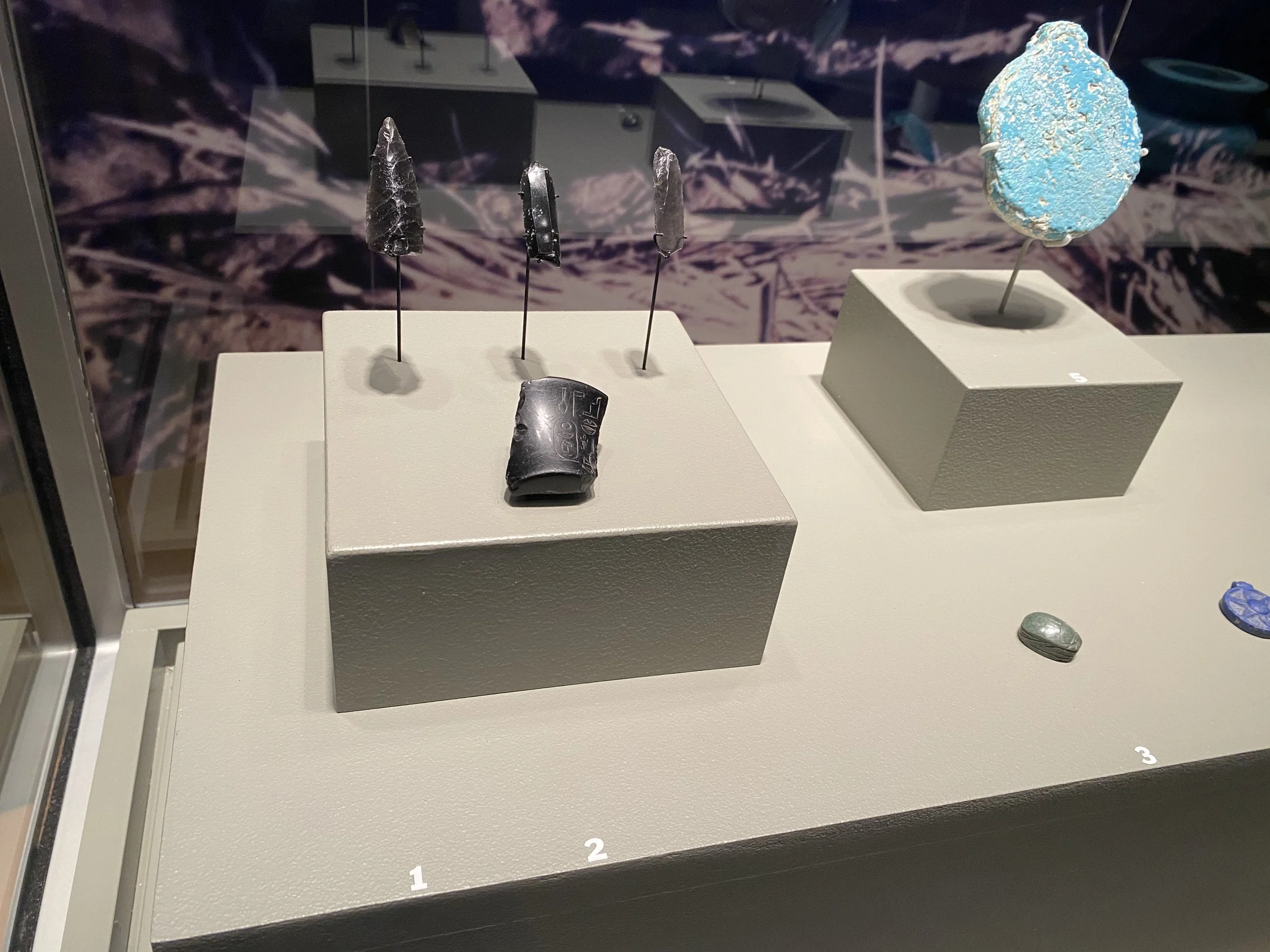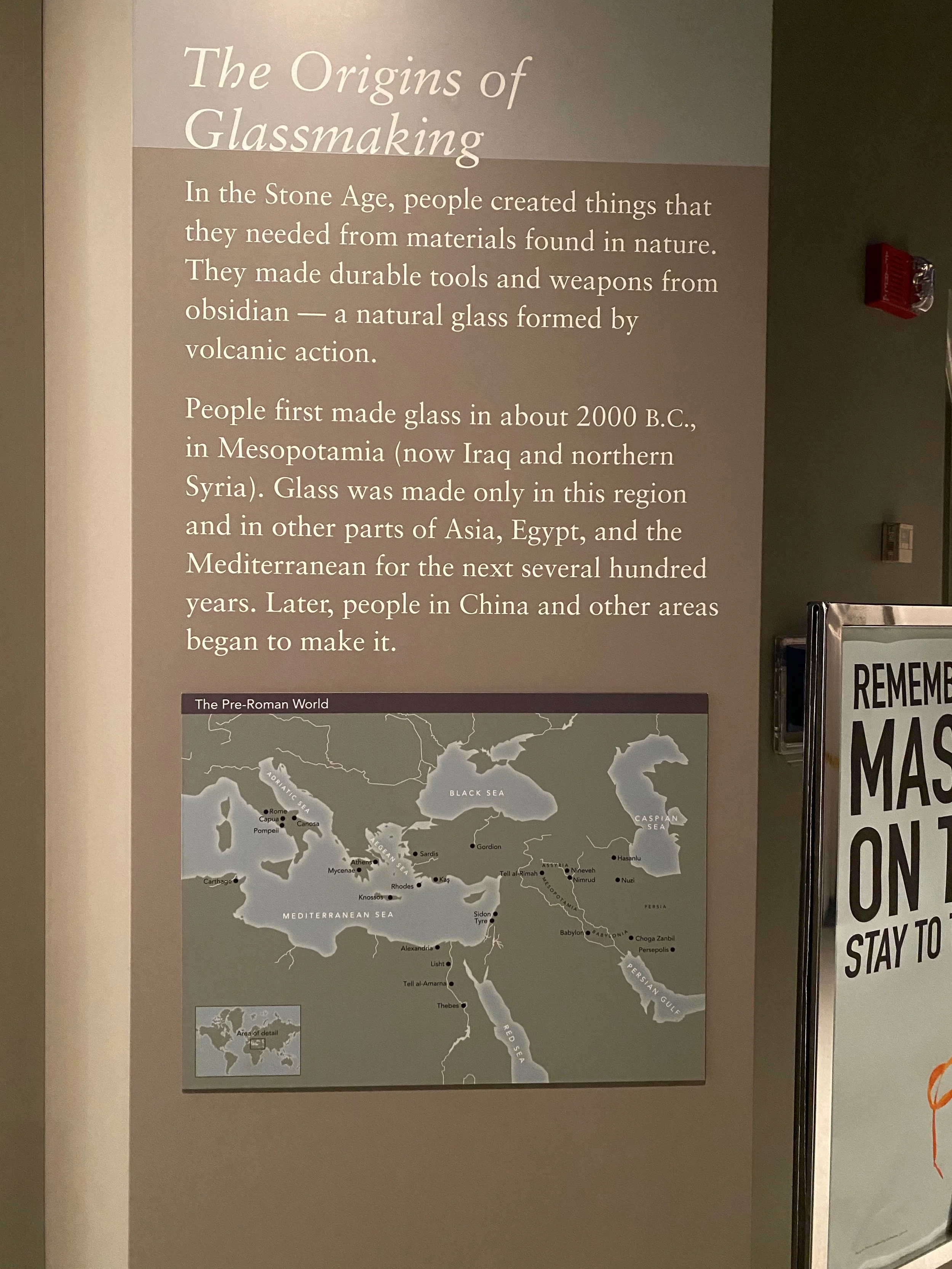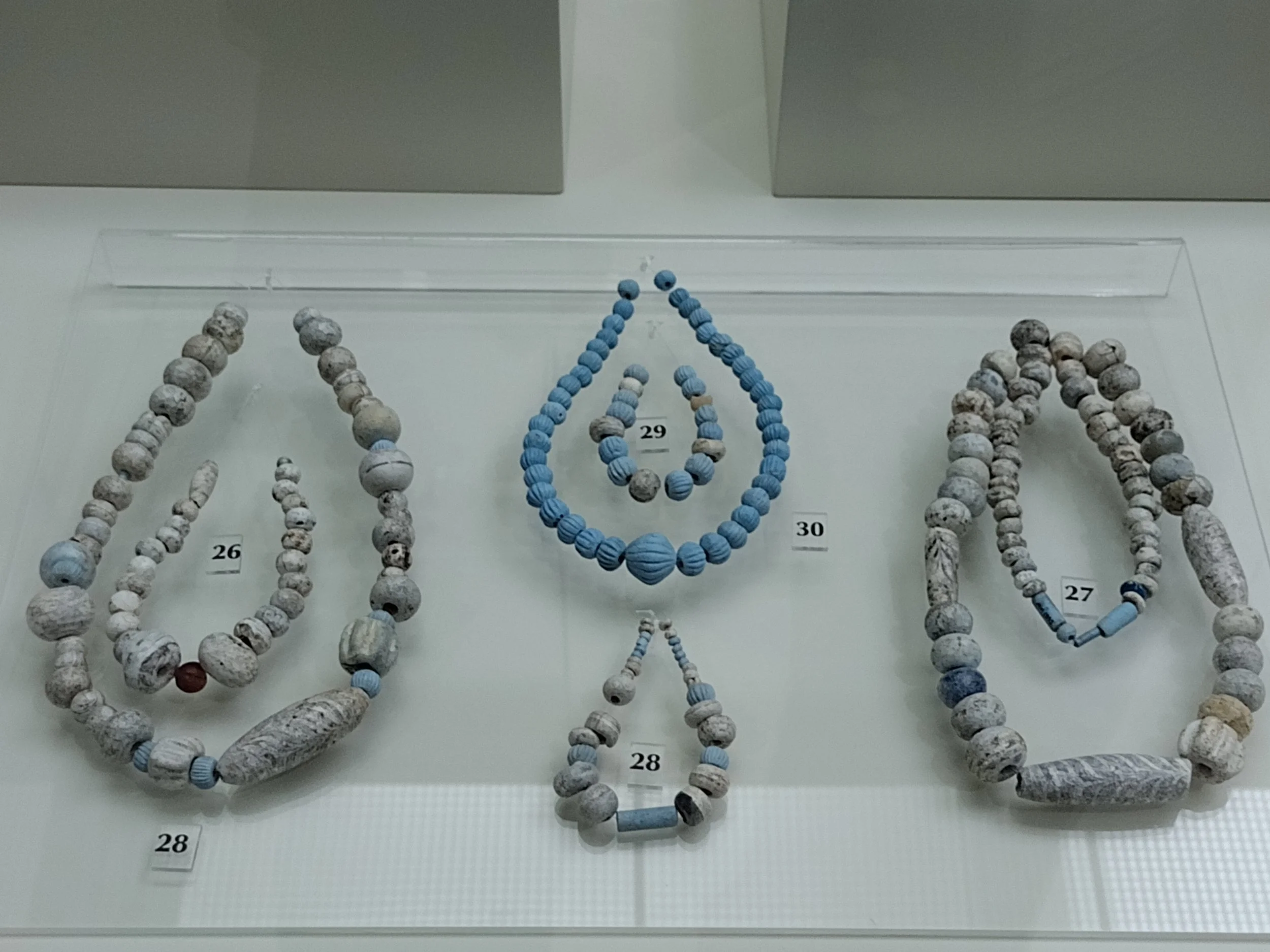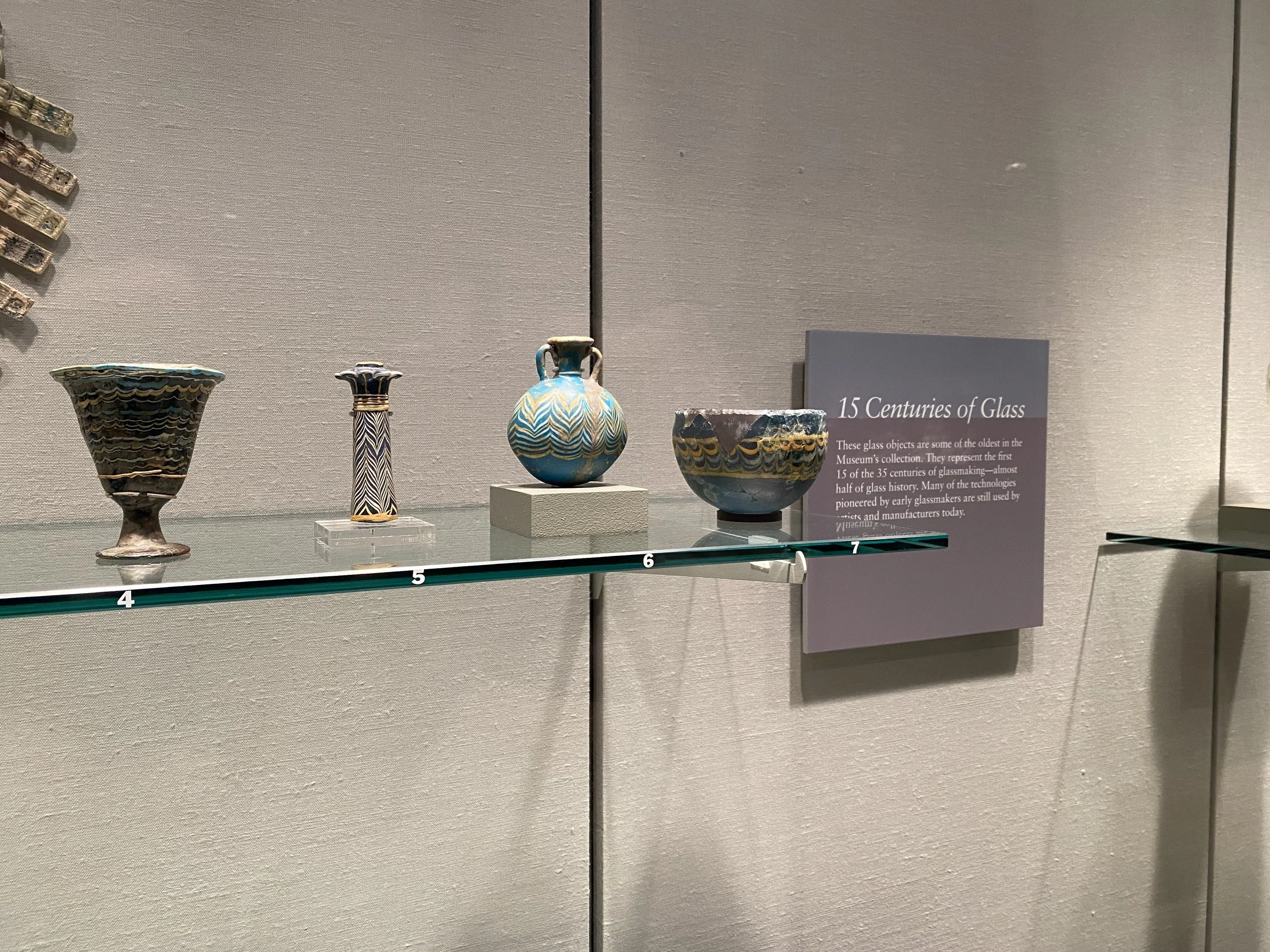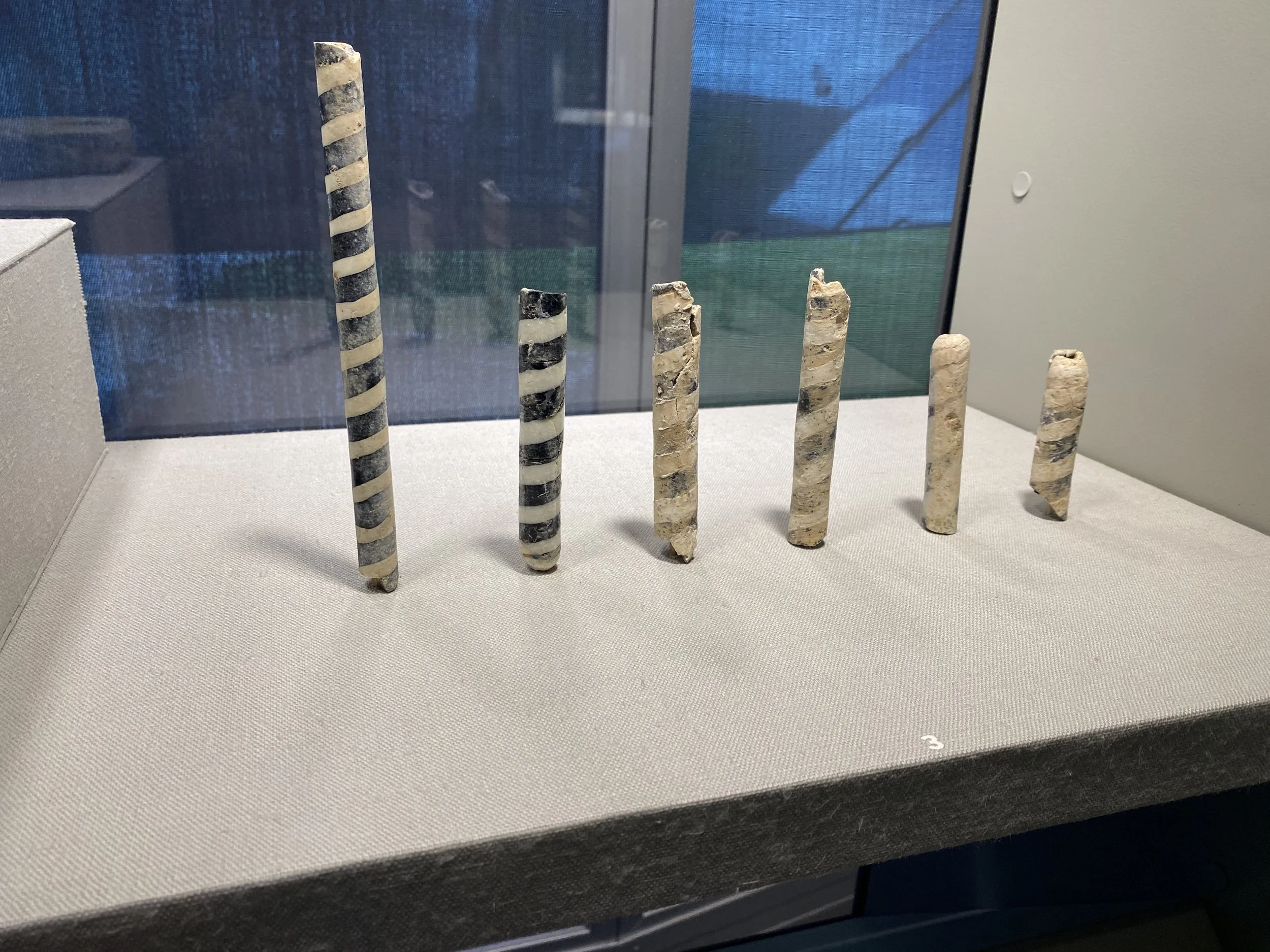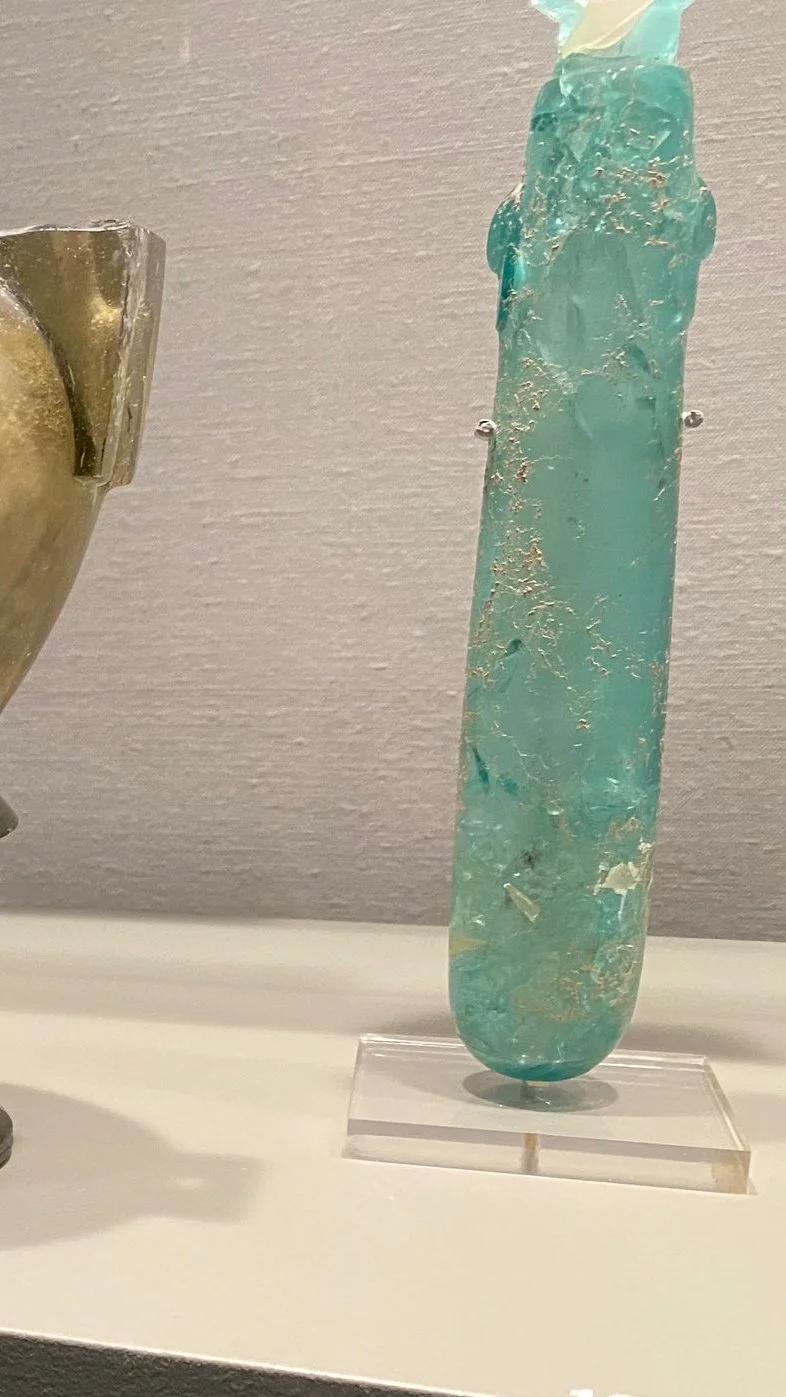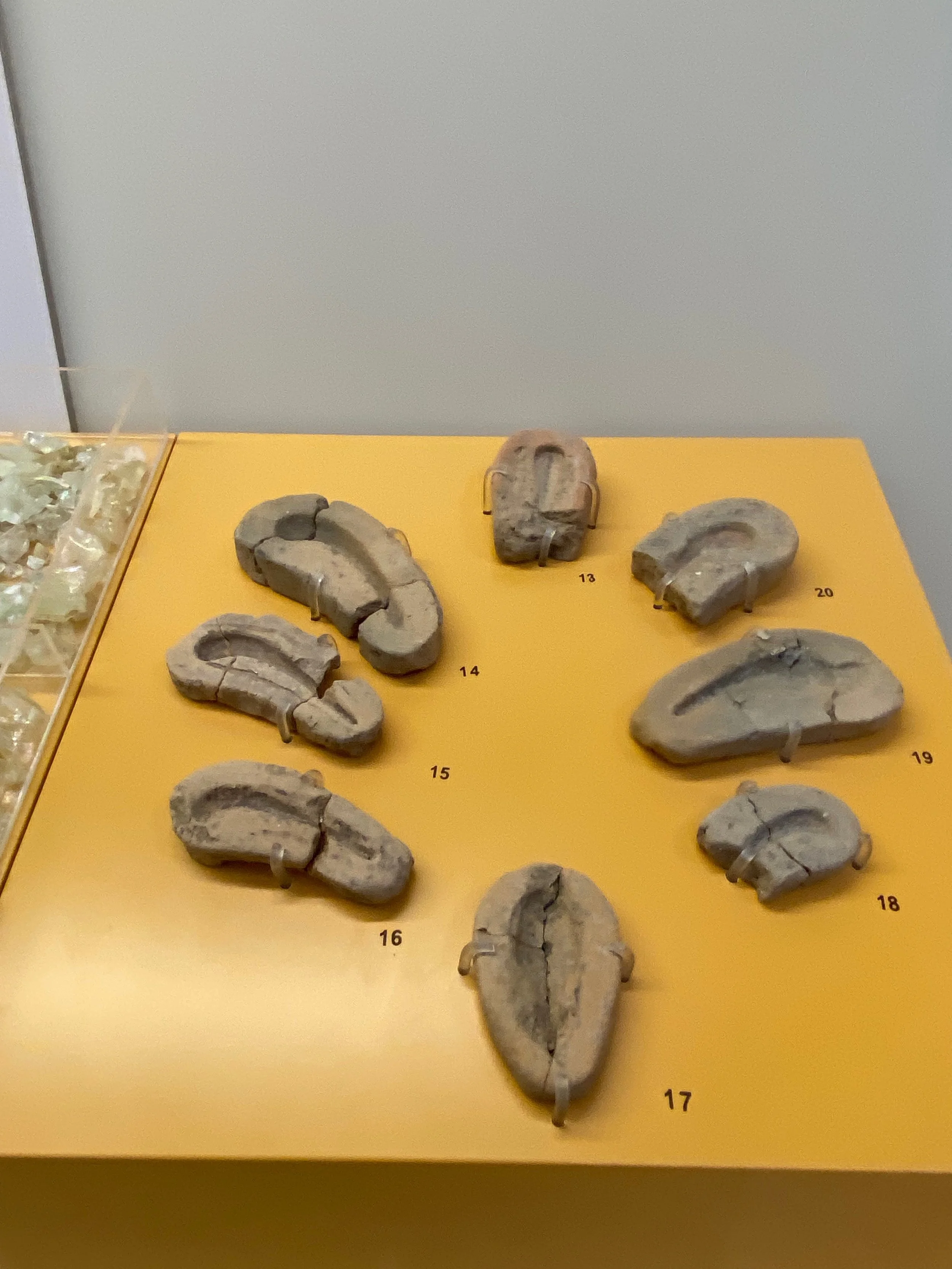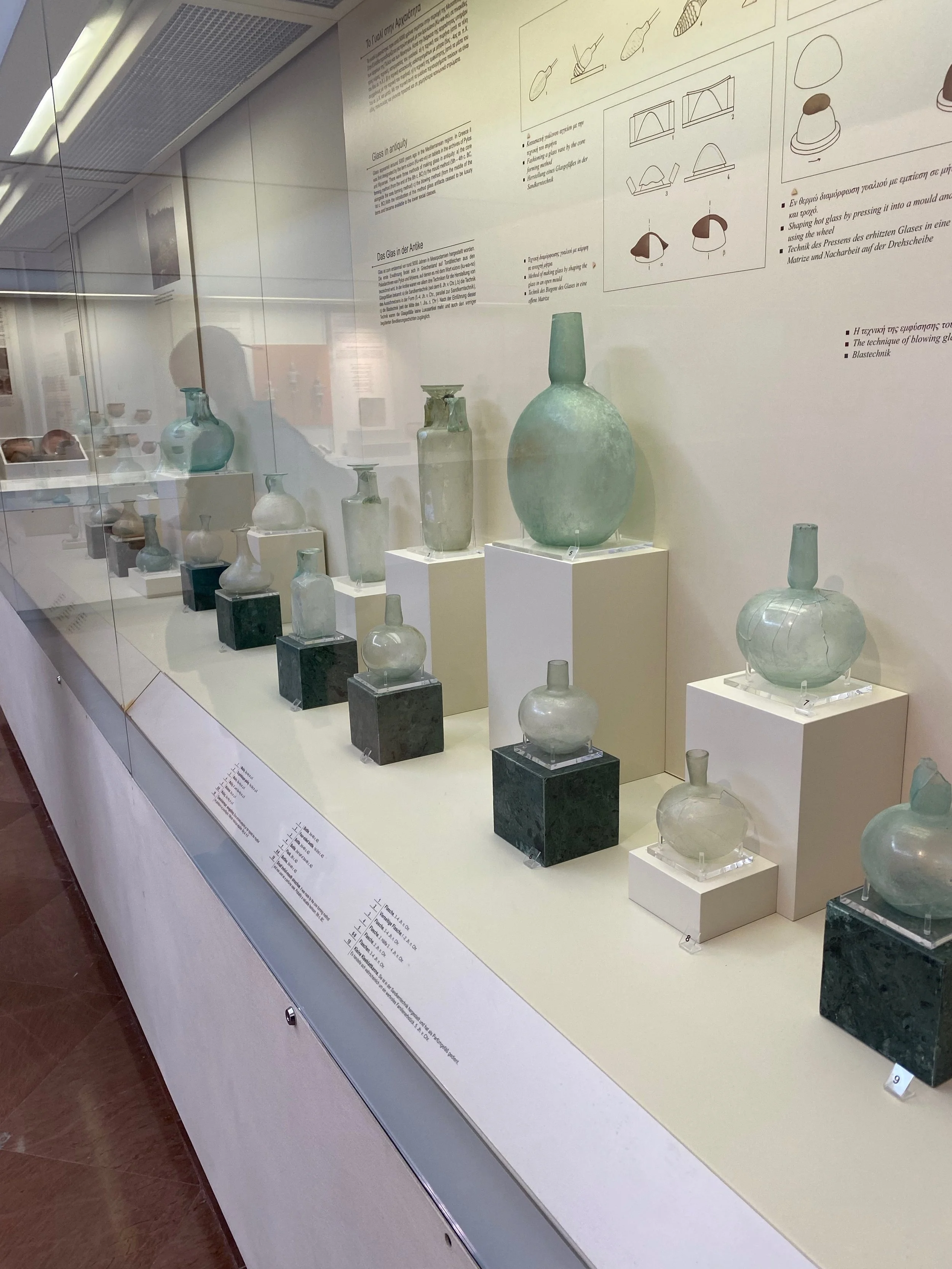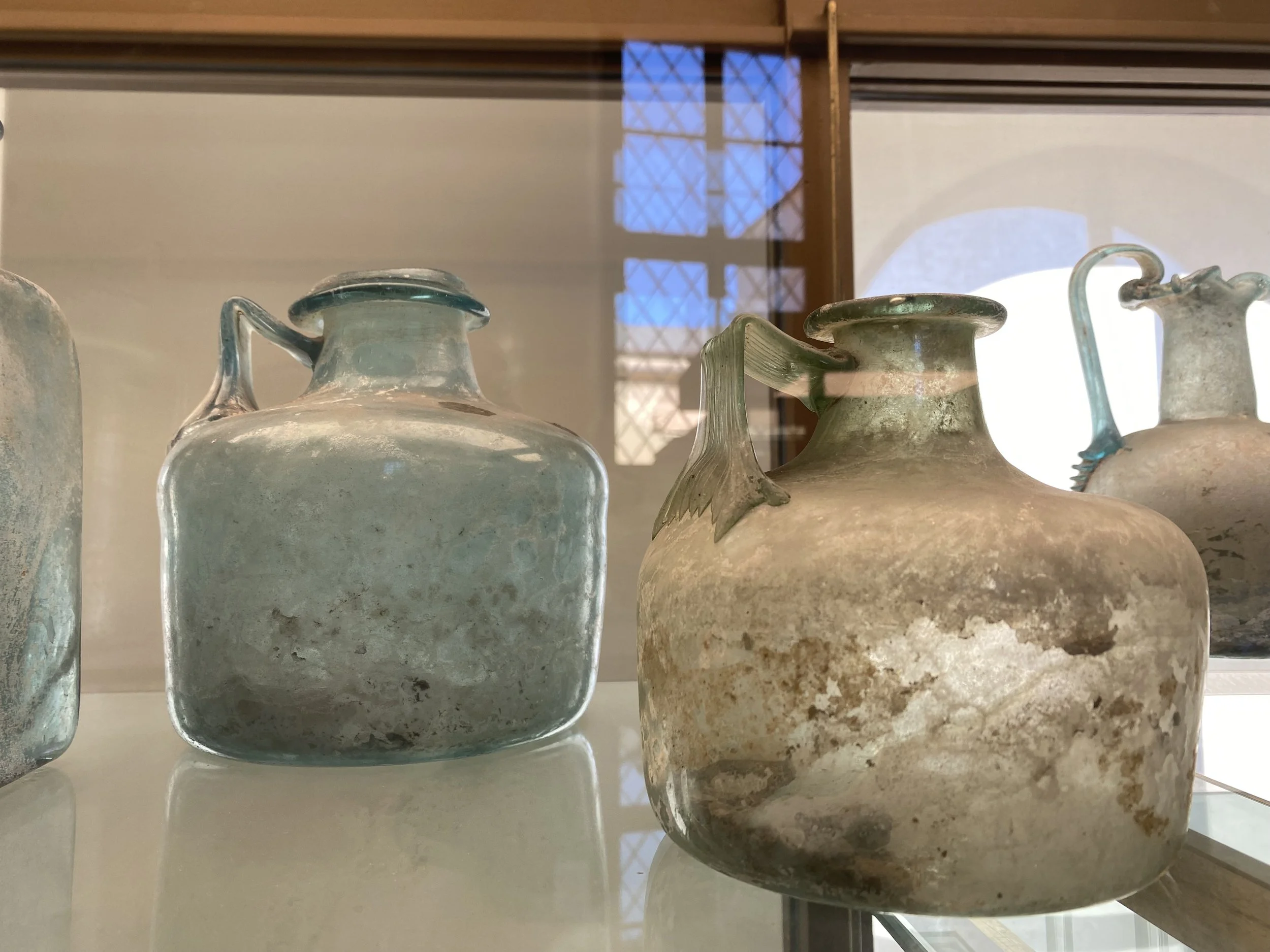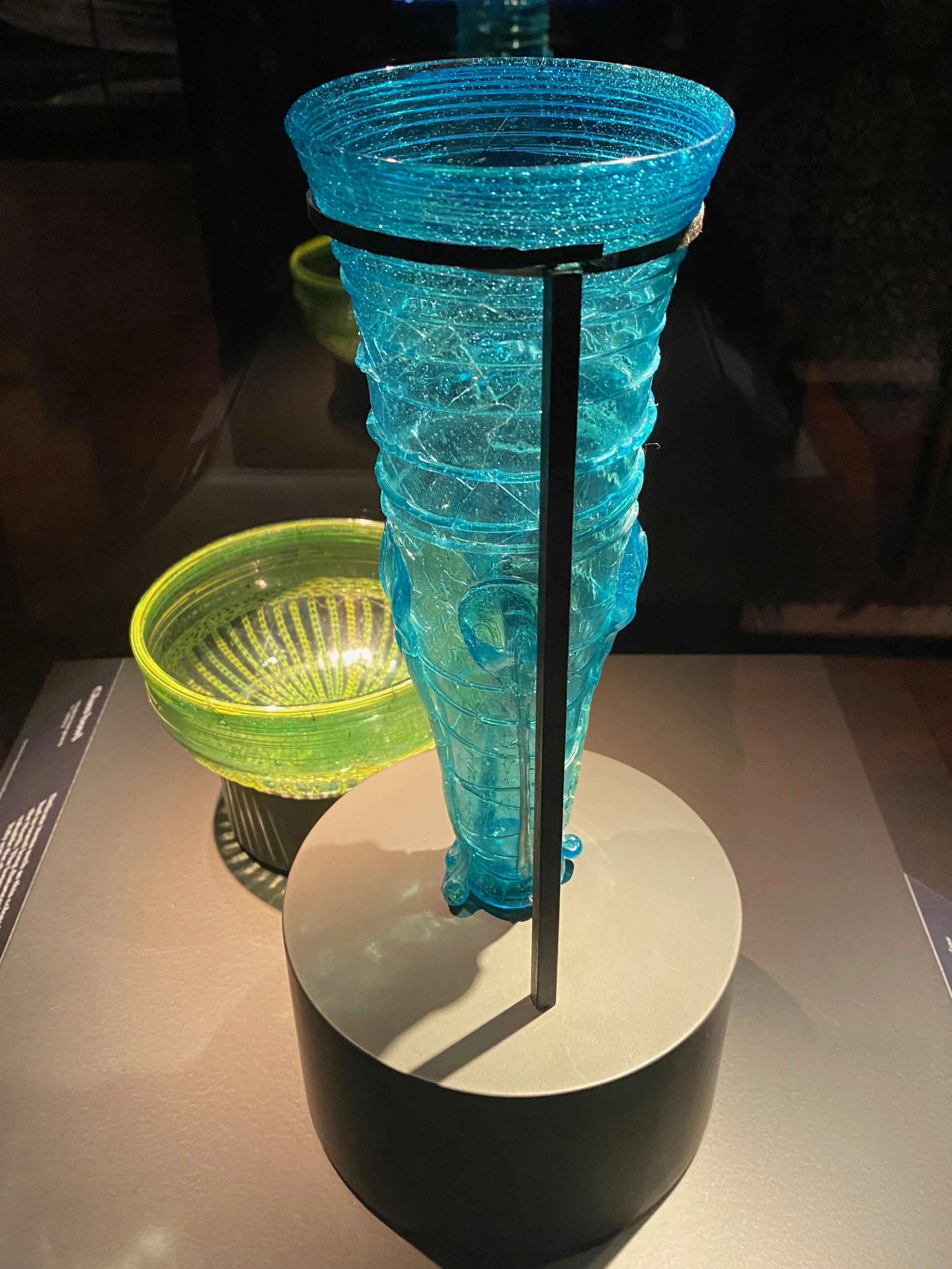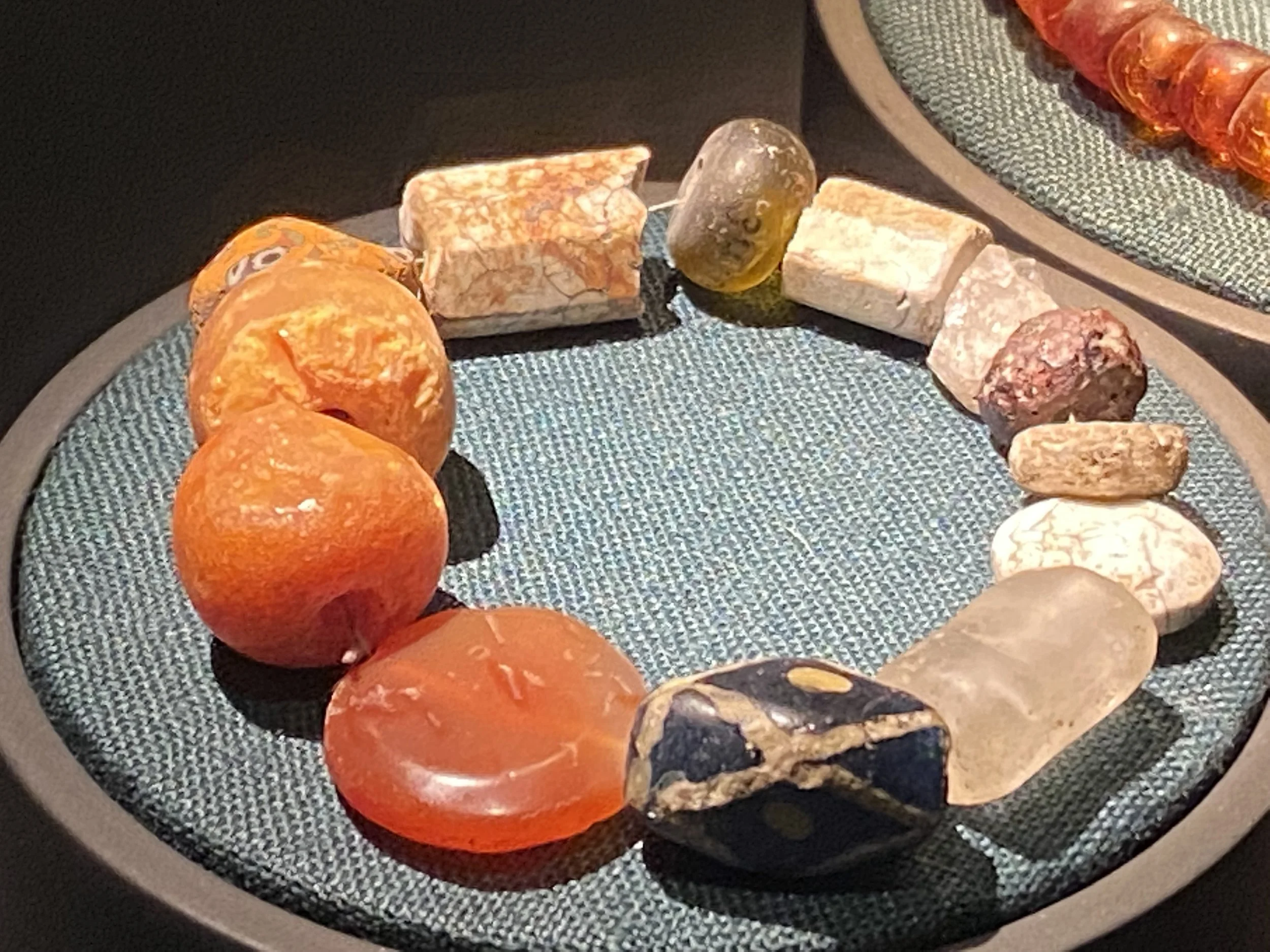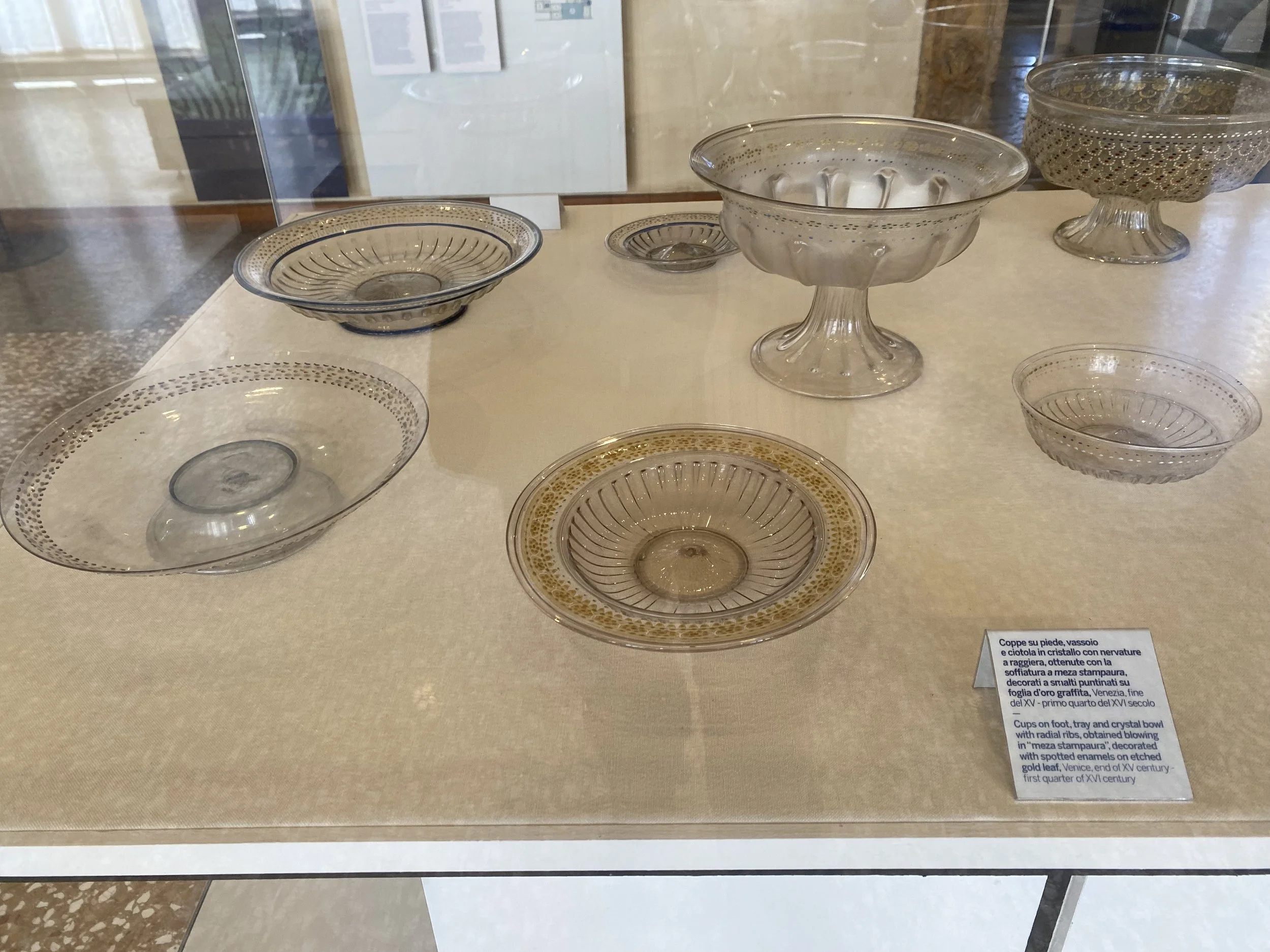Chronology of Pre- Modern Glass
From Furnace to Flame
This timeline is meant as a rough guide to the introduction of various aspects of glass production and work. It is not meant to be definitive. It is partly inspired by my visits to museums and supplemented with some light internet-based research. The list is skewed toward Mediterranean and European history due in part to my own interests.
3000 BCE Obsidian Tools - CMOG
1560-1530 BCE Obsidian Vessels - CMOG
2000 BCE First Glass Mesopotamia (Later parts of Egypt and Asia) -CMOG
CMOG
1550 -1350 BCE Faience Vessels and Objects - CMOG, Vatican, Mycanian Archaeological Museum
Faience - Mycenae Archaeological Museum
1500 -1200 BCE Glass is being both hot and cold worked. Glass pressed into molds or had pressed features. Glass with drilled perforations- CMOG
1400-1250 BCE Vessels being formed hot around a core with trails and evidence of tooling under heat. - CMOG
Core Formed - CMOG
1250 BCE Reticulated Glass Bars -CMOG
Iran - CMOG
1200-1101 BCE Iron Age - Wikipedia
800-600 BCE Glass is being cast with evidence of cold worked, cut and polishing. (Kiln/Furnace worked) - CMOG
CMOG
699-500 BCE Evidence of glass being cut with complex tools, lathe and/or wheel cut- CMOG
CMOG
600-250 BCE Complex/Compound Eye Beads - CMOG
500-400 BCE Complex decorations being formed with glass rods, including bails (Rod Formed) - CMOG
CMOG
Workshop of Pheidias, Olympia, Greece-Is casting glass components for statues - Olympia Archeological Museum.
450-330 BCE Vessels being made as cast and/or sagged (draped) pieces (kiln/Furnace Worked) - CMOG
CMOG
300-101 BCE Mosaic vessels and tableware - CMOG
299-1 BCE Evidence of glass being fused/assembled and ground (Kiln/Furnace Worked) inlays and mosaic work - CMOG
CMOG
1-100 CE Roman blown glass and mold blown glass - CMOG, Vatican, Murano Museum of Glass, Olympia Archeological Museum
1-300 CE Roman cut and etched glass - CMOG
CMOG
301-400 CE Dichroic Glass Lycurgus Cup, example of Caged Cup (cut) and Dichroic Glass from Rome - Wikipedia
601-700 CE The Norse have glass vessels - The Vikings Begin
“The Vikings Begin”
801-900 CE The Norse Glass Beads - The Vikings Begin
701-800 CE Stained Glass - CMOG
CMOG
1101-1500 CE Enameled and gilded glass - CMOG
1451-1600 CE Venetian Glass - Murano Museum of Glass
I have been mesmerized by the the existence of so many iridescent, ancient glass objects. The current thinking is that the iridescent appearance is a consequence of weathering and not a feature intended or visible at the time of production, but rather, a consequence of the conditions the objects around themselves are in at the end of their useful life.
[Note] Iridescent appearance of ancient glass is a result to being barred.
1848 CE Tiffany develops iridescence glass replicating ancient
1905 CE Carnival Glass

